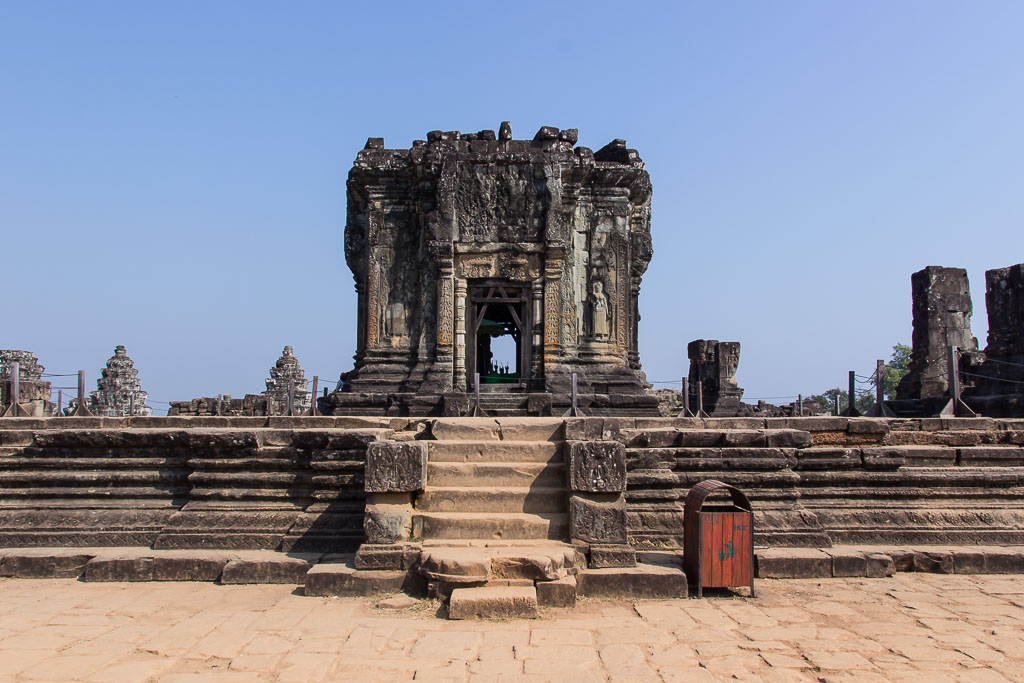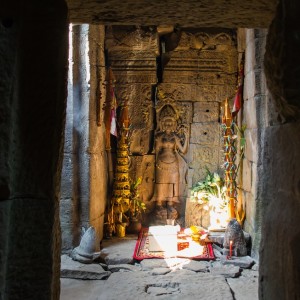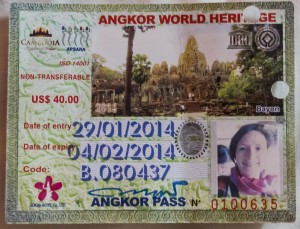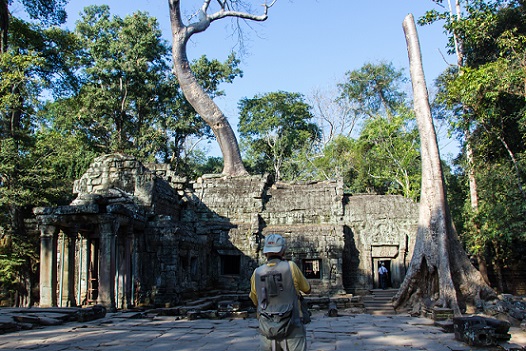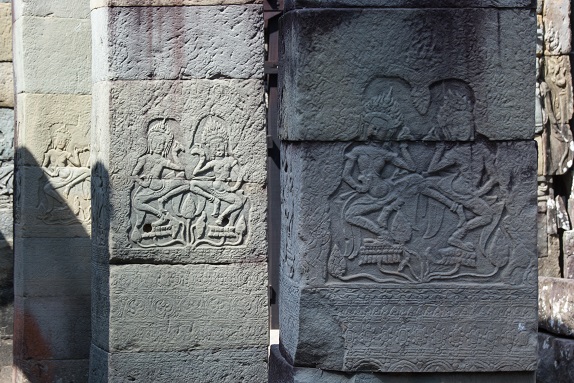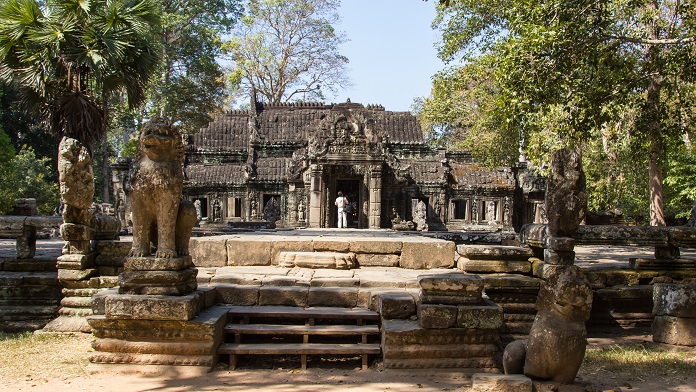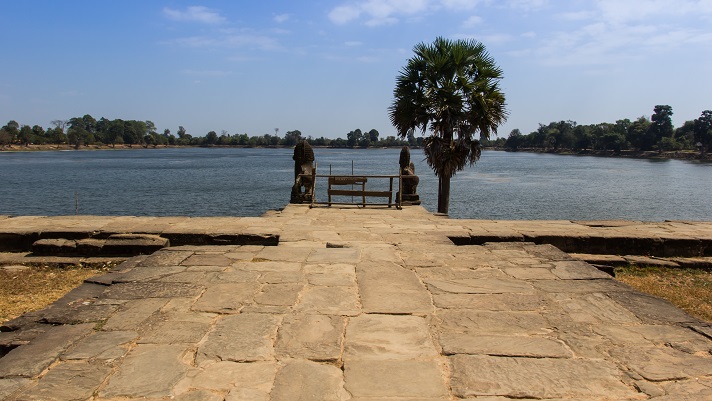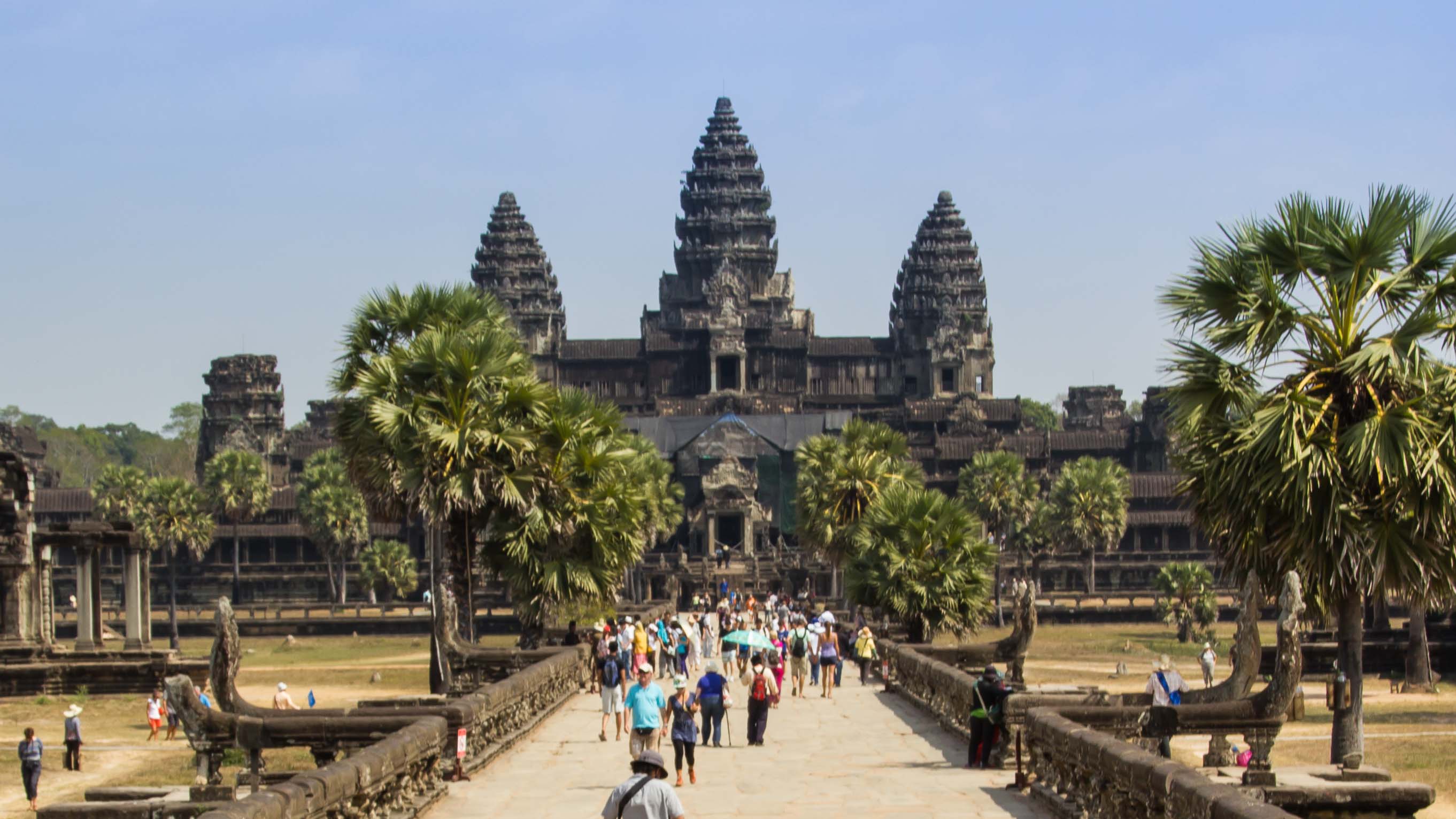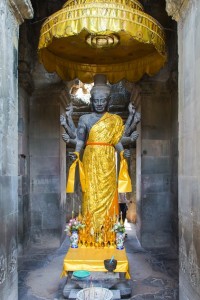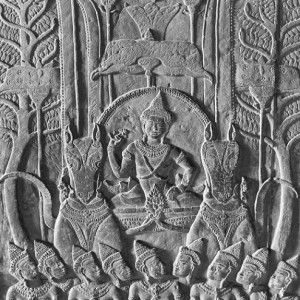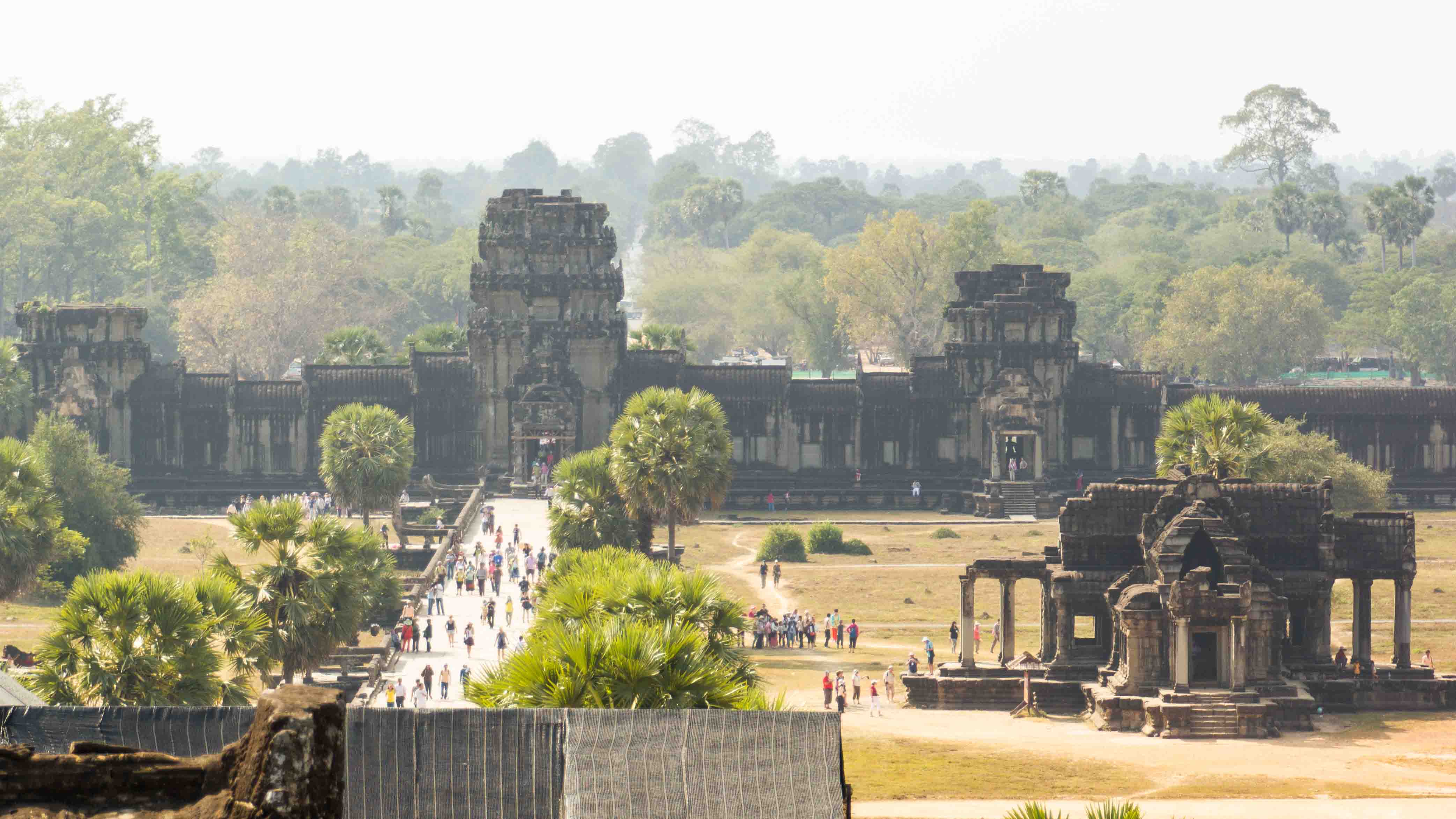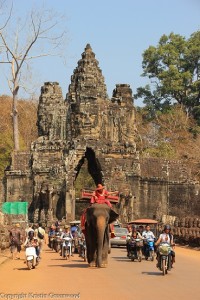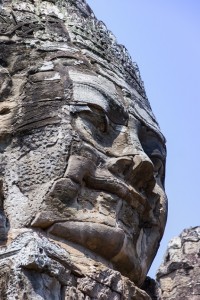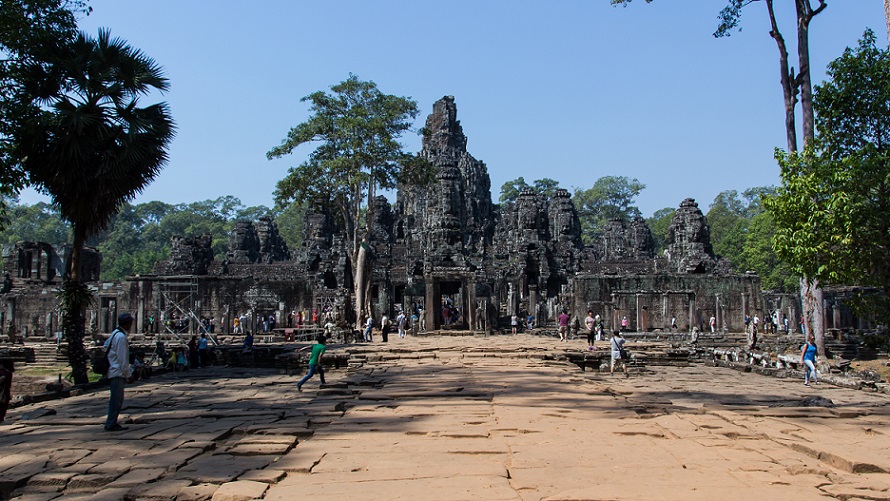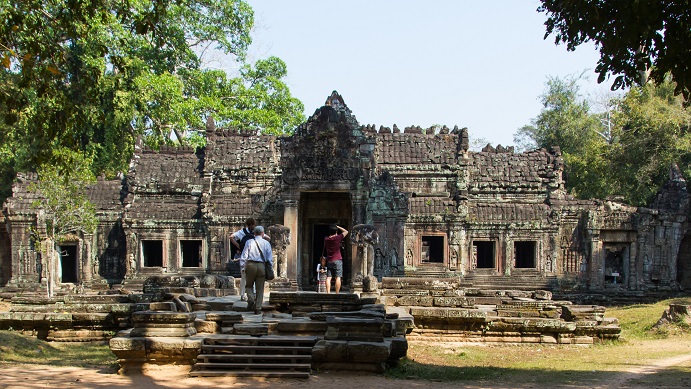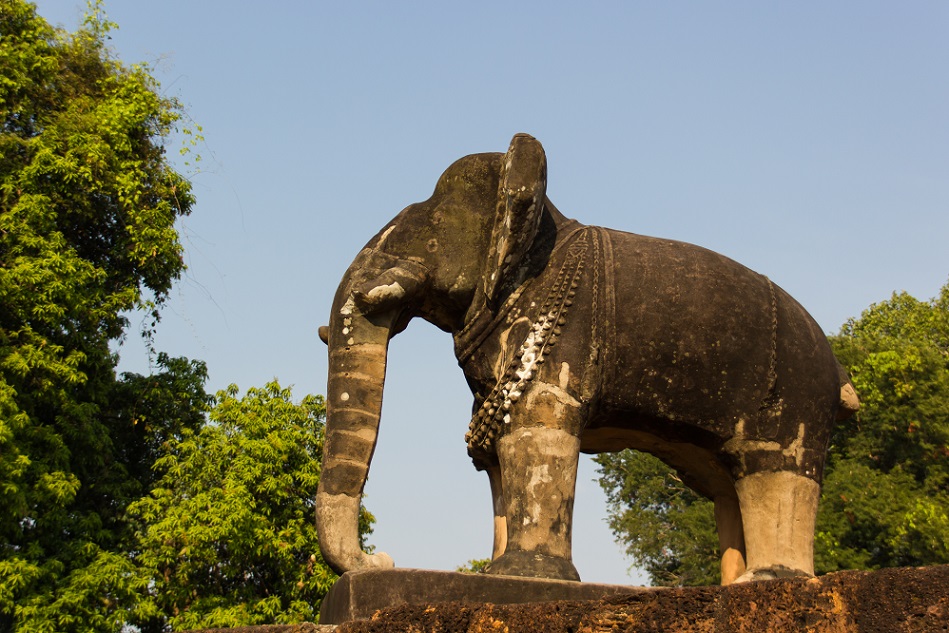2 Day Tour of the Angkor Archaeological Park in Cambodia
Did you ever find treasure hunt movies that really captured your imagination and left you with an itch for adventure? Whether the stories of Indiana Jones or of Lara Croft the Tomb Raider many minds have been filled with vivid images of natural and man-made wonders along the way.
When you visit the temples of Angkor, you can step into such an adventure for real. Especially the smaller temples like Banteay Kdei or Preah Khan, both of which are great to explore as they are somewhat less frequented than the main site.
The Angkor temple area is huge and contains dozens of temple ruins. One day of exploration is simply not enough. Two to four days is a good time frame depending on your level of interest. Most readers of this article will have travelled far to find them and it is worth spending more than a day if you do. We ventured through and explored some of the temples for two days. You can read about our schedule further below but before that we want to answer a few questions you might have prior to your visit.
Where to stay?
The Park is located 5km north of the town of Siem Reap in Cambodia. There aren’t any hotels in the park so most visitors stay in Siem Reap an interesting, bustling town full of restaurants, markets, various qualities of accommodation (shack to Park Hyatt) and nationalities.
How to get to the temples from Siem Reap?
During both days we utilised a friendly tuk-tuk driver. His name was Vet and he charged us USD 25.00 for the day which seemed to be fairly standard at that time (around Chinese New Year). Negotiate the exact details with the driver prior to climbing aboard and taking off.
You can also hire a bicycle, however, the traffic in Siem Reap and on the main road to the temple area can be quite busy. The roads are filled with minibuses carrying full loads of tourists (mainly Chinese and Korean) to and from the temples and buffet eating places at speeds as if they were competing in an episode of Amazing Race. These buses had little regard for road safety and it very much operates on the basis of the bigger vehicles expect priority over the smaller – we would not have fancied cycling the main road. The roads were less busy inside the temple area, especially where the smaller temples are.
Entrance fees
Visitors can purchase three types of entry tickets each of which covers entrance to all temples.
1 day for USD 20.00
3 days for USD 40.00
7 days for USD 60.00
What to wear
Wear light, airy, clothes and good shoes. Flip-flops would have been a nuisance as we constantly came across stones and steps.
Have a raincoat with you during the wet season (May to October). If you hire a tuk-tuk, a face mask is good to have with you. It might seem funny at first, but especially in the dry season (October to April) the roads can be very dusty.
Aside from that, make sure your shoulders are covered and you wear at least knee length shorts. Paul was fine with knee length shorts and a t-shirt at Angkor Wat and Bayon. My shorts were a bit shorter and Vet told us that they are not accepted in Angkor Wat. As there were plenty of friendly “Hello Lady” type of sales women around, I quickly bought one of those cheap pyjama style trousers (a sort of backpacker girl uniform) before we went into Angkor Wat.
Protect yourself from the sun and you might need mosquito repellent for sunset and sunrise hours.
Good to know
We got better shopping deals in the temple area than in Siem Reap itself and found the sellers very open to negotiation. If you want to buy any souvenirs have a look there first.
Important at any time
It is very hot and you will use a lot of energy, so make sure you stay hydrated.
What are the busiest temples?
Angkor Wat, Bayon and Ta Prohm are the busiest temples and so we planned our days around that.
Day 1
In the morning, Vet took us to the main Entrance Ticket Booth for the temples. Once you have your pass, you don’t have to enter through this point in the following days.
This is where you will get your printed passes. They also take a photo of you which will be on the pass (personalised to avoid people sharing them). You have to have your passes with you all the time. They are being checked prior to entering the individual temples and at random points throughout.
Ta Prohm Temple (also informally referred to as the “Tomb Raider Temple”)
At first we headed to Ta Prohm because it is less busy in the early morning. There was a lot of restoration work going on and already many people having their photos taken with the roots of the massive fig and silk-cotton trees which grow from the towers and corridors. Fortunately, we found some attractive corridors around it where there were less people.
The temple became famous as it was used as a location in the movie Tomb Raider. It originates from the mid-12th / early 13th century and was founded by the King Jayavarman VII.
There are two parking lots on two sides of the temple so just watch out that you don’t return to the wrong one!
Banteay Kdei Temple
Near Ta Prohm is the Banteay Kdei temple which was already considerably less crowded than Ta Prohm. We actually preferred visiting the smaller and less popular temples.
It was built in the late 12th and early 13th century during the reign Jayavarman VII. We especially liked the bas-relief displayed in the temple.
Srah Srang
Opposite the East entrance of the Banteay Kdei Temple is the water reservoir Srah Srang. It was built in the mid-10th and late 12th century. The spot (after you exit the Banteay Kdei Temple) overlooking the water reservoir is beautiful. Not only does it offer a good view but you can also admire the naga balustrades and guardian lions besides you. This is a pleasant place to have a mini-break.
Good to know: Srah Srang is a great place for sunrise and much better and less busy than Angkor Wat.
Lunch
Afterwards we went for an early lunch. Vet knew a restaurant that was located in a proper house. We invited him for lunch but he told us that the driver’s automatically get food in a separate area from the restaurants. You will not find eateries everywhere so it is good to speak to your driver about your schedule or to research some restaurants prior to your visit. In any case, the drivers eat there all the time so they know the good places.
Angkor Wat Temple
We were at Angkor Wat at around 1pm which was perfect because most of the tour groups were still enjoying their meals. In any case, the road leading the temple was always busy when we drove past it. It seemed like a quite a circus spectacle filled with tuk-tuks, selfie-sticks everywhere, tour groups from all over the world and last but not least the tour guides being the ringmasters.
Plan at least 1 to 2 hours for Angkor Wat because there is a lot of ground to cover. Vet dropped us off at the main entrance on the Western side and then we headed towards the largest religious monument in the world. Angkor Wat was built between the early-mid12th century during the reign of King Suryavarman II.
When you arrive, you first walk along a long walkway to cross the giant moat that surrounds the entire rectangular shaped Angkor Wat temple area.
Once you reach the outer wall, don’t simply go through it but rather head to the left and walk a little along the hallway. A few metres down, you will soon see the giant statue of the Hindu god Vishnu which is also the god that the temple was dedicated to. The statue has eight arms and is covered with a golden coloured fabric.
After the outer wall, you can continue along the walkway to the main entrance of the central temple or you head to the right along the path to the library and thereafter to the central area. The paths on the side are less busy than the main walkway to the main entrance and therefore so much better to walk along. At the main entrance to the central temple, just follow the signs. They sort of guide you through the three sections.
Our first highlight was the outside wall of the central temple which contains an impressive display of bas-reliefs. The official tour guides can explain to you in detail the stories behind it all. You can easily hire a tour guide at the beginning of the first walkway that passes the moat. They also speak different languages.
Another highlight was the central tower which can only be reached by climbing up a steep staircase. There was a small queue so that might be different at certain times of the day.
The magnificent areal views at the top make the steep climb well worth it.
From up there, the grandness of the temple mountain really strikes you. It is an incredible structure.
For us, the three temples were enough for one day and so we headed back to Siem Reap.
Phnom Bakheng Temple
If you still have some energy left, then you can also visit the Phnom Bakheng temple. The temple sits on hill and you therefore have to go on a little uphill hike. Hence, it is better to visit it in the morning or later in the day.
Important
Phnom Bakheng is a very popular spot during sunset, however, we also saw a sign that they only allow a limited number of people (300 at a time) to the main temple area at the top so you could end up getting there in time for the sunset but may not be allowed up.
We visited Phnom Bakheng in the morning of our second day.
Day 2
Phnom Bakheng continued…
The advantage of visiting it in the morning was that it is less busy and we had no problem getting to the main temple area.
At the beginning greeted us a monkey that was kind of a pet of a local family. A few metres along, we saw the father of the family playing in a band of victims of landmines. Their music was just wonderful.
The temple was constructed in the late 9th and early 10th century during the reign of the King Yasovarman I. The fact that there were hardly any people around and that the path was in the shade made the hike quite pleasant and romantic.
Once you are at the top, a staircase leads to the main temple area. It is kind of a giant platform and in the middle is a small temple. It is simplistic but also beautiful. Especially the colour of the stones in contrast to the greenery and the reddish coloured soil was picturesque.
On our visit the sky was a little bit hazy and the sun was in the wrong direction so we could only see Angkor Wat a little bit from afar.
Angkor Thom
Following Phnom Bakheng we drove to the South Gate entrance of Angkor Thom. Our driver stopped prior to the entrance and so we were able to get a few photos of some very picturesque statues on the side of it and captured some elephants coming through the gate.
Angkor Thom is the last royal city of the Angkor Empire. Angkor means Capital City or Holy City and Khmer are the ethnic group of Cambodians. Inside of the Angkor Thom are various temples and sights to discover.
Bayon Temple
Vet stopped outside of Bayon temple and thereafter explained to us that he would meet us at the Terrace of the Leper King.
The area is very big and there is a lot to see. His suggestion was good, because we walked from Bayon past several sights to the Terrace. It would have been a nuisance to walk all the way back to Bayon. If you have a driver, discuss the meeting point and any dining options before you head off.
After our calm morning exploration at Phnom Bakheng it felt as we suddenly walked into an ants nest. Not only did we see the giant faces in the stones that make Bayon Temple so famous but sadly there were many other real faces around. Even with all the people there, it is worth seeing. The detail of the faces within the stones is majestic. It was constructed in the late 12th century during the reign of King Jayavarman VII. Another remarkable part of this temple are the bas-reliefs on the exterior walls of the lower level and on the upper level.
Baphoun, Phimeanakas, Elephants terrace and Leper King terrace
After Bayon, we walked past Baphoun, Phimeanakas, the Elephants terrace and then met Vet as agreed at the Leper King Terrace. We didn’t walk all the way up to Baphoun or Phimeanakas temple. It would have simply been too much as we also planned to see some other temples that Vet chose for us. The beginning part of the path to Baphoun is a great spot for holiday photos.
You can basically spend quite some time in this area and there are many opportunities to buy souvenirs.
The Elephants terrace and the Leper King Terrace originate from the late 12th century during the reign of King Jayavarman VII. The detailed craftsmanship of both structures was really good.
– Click on the individual picture to see a larger version-
- Baphuon Temple
- Phimeanakas Temple
- Elephants Terrace
At the Leper King Terrace, we were immediately approached by a lady from a restaurant enticing us to visit her place for lunch. We said no thank you as our driver already had another eatery planned for us. Soon after Vet, who was wearing all the time a distinctive hat that made him stand out from the other drivers, approached us and showed us the same restaurant which the lady who had approached us before was from. This restaurant was outdoors and kind of market stall like. In the front and in the middle they arranged various tables and to the back they had their outdoor kitchens. The food was ok.
After our late lunch, Vet took us to two of his choices (again both temples were not so busy). We headed towards the North gate where Vet again gave us a moment for photos and then exited Angkor Thom and drove to the nearby Preah Khan temple.
Preah Khan Temple
Preah Khan, which means sacred sword, turned out to be another one of our favourite temples. It was built in the late 12th century during the reign of King Jayavarman VII. The temple is well preserved and it has a decent size to explore and one can spend a while there. At one point it felt very mystical in there when we discovered an almost hidden shrine (see second image of this article). It was tucked away in a corner and an Apsara bas-relief was carved into the wall. There were a few incense sticks burning away, flowers and the light magically shined through a window onto the statue. This felt like a very special moment.
We can highly recommend visiting this temple!
East Mebon Temple
The last temple that Vet wanted to show us was East Mebon. East Mebon is a 10th century temple built during the reign of the King Rajendravarman II. Similar to Phnom Bakheng, it looks like a platform. What makes this temple so special, are big elephant guardian statues on each of the corners. The afternoon light beautifully lit up the elephants. East Mebon was the perfect ending to our 2 day tour of the Angkor Archaeological Park area.
An adventure like that will always be locked deeply inside your memory.

